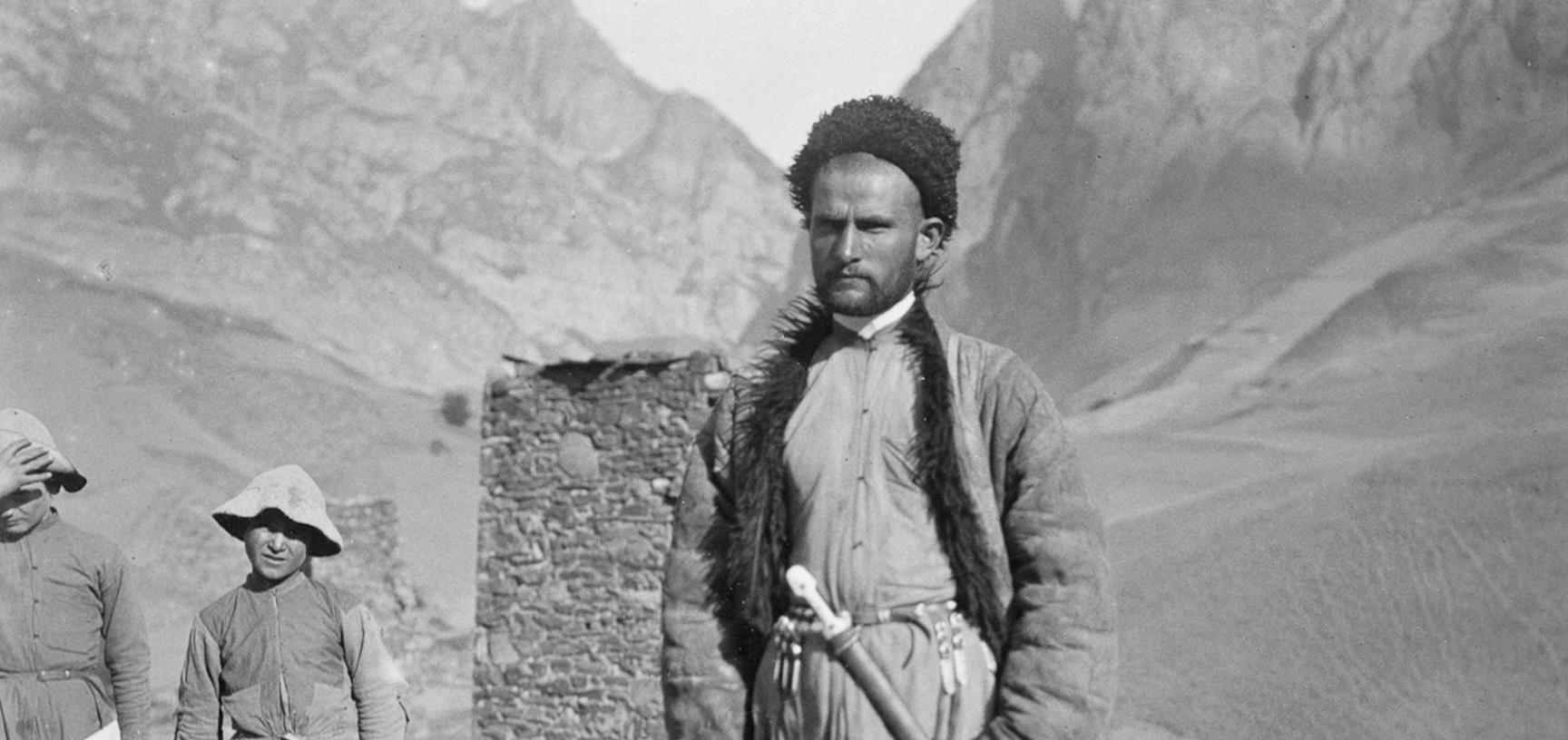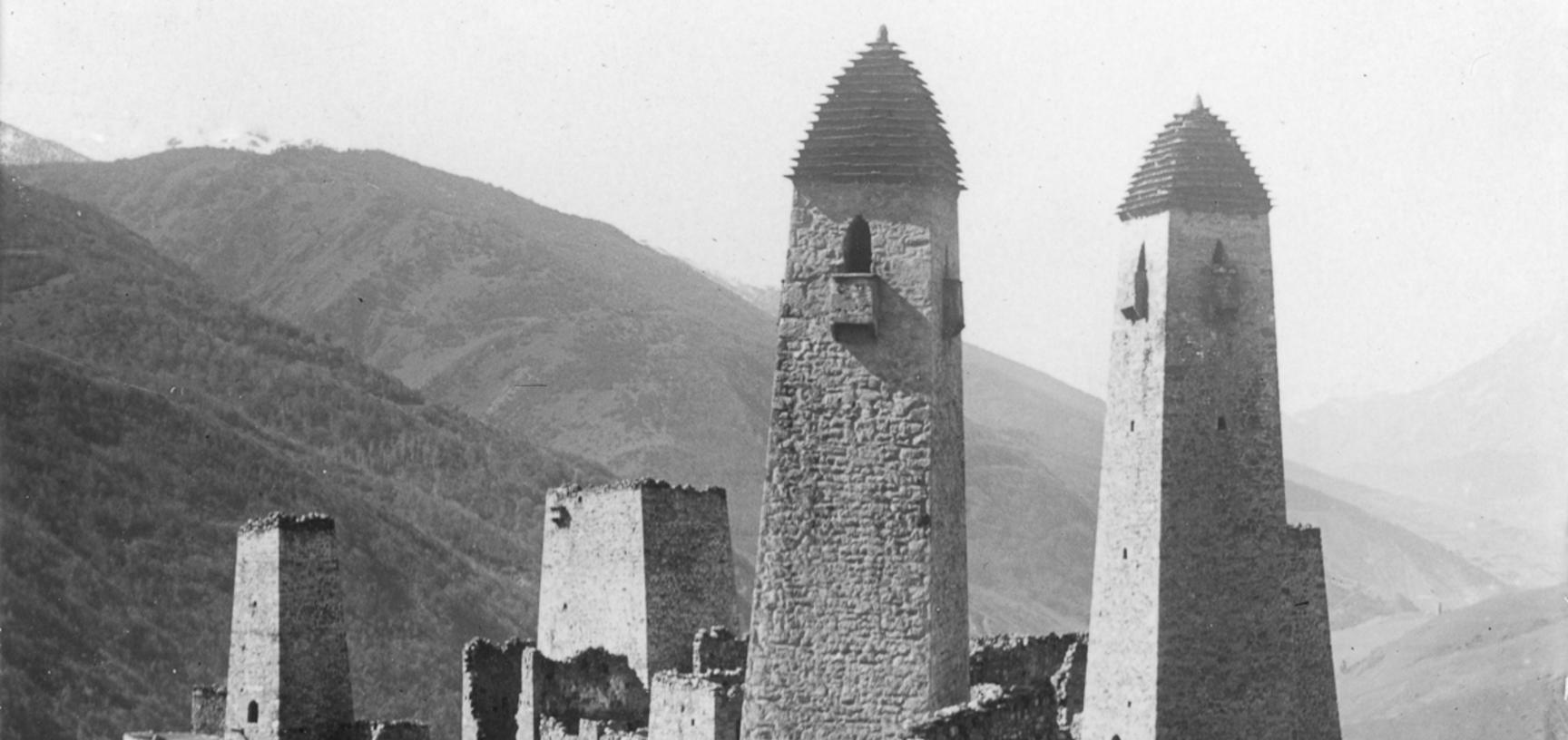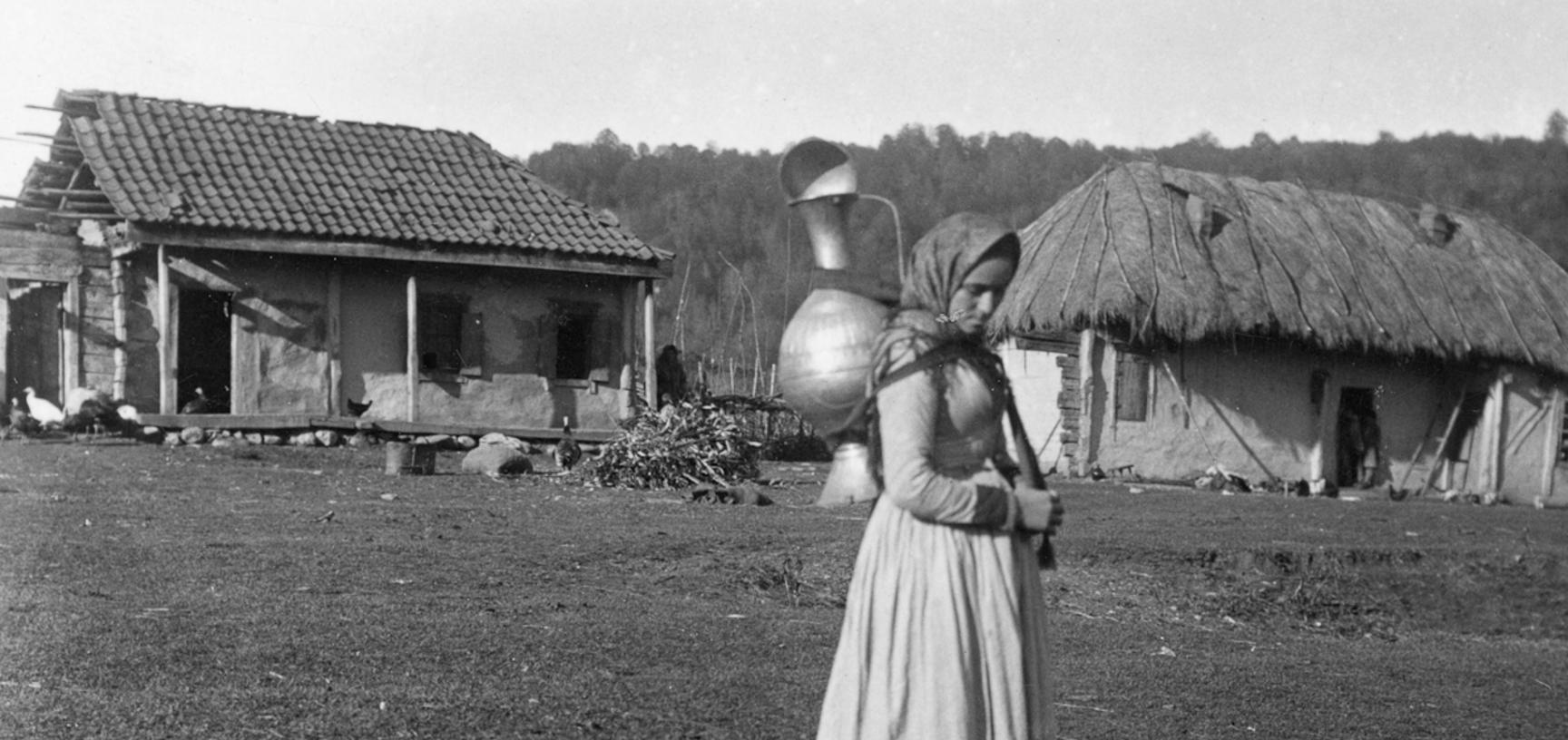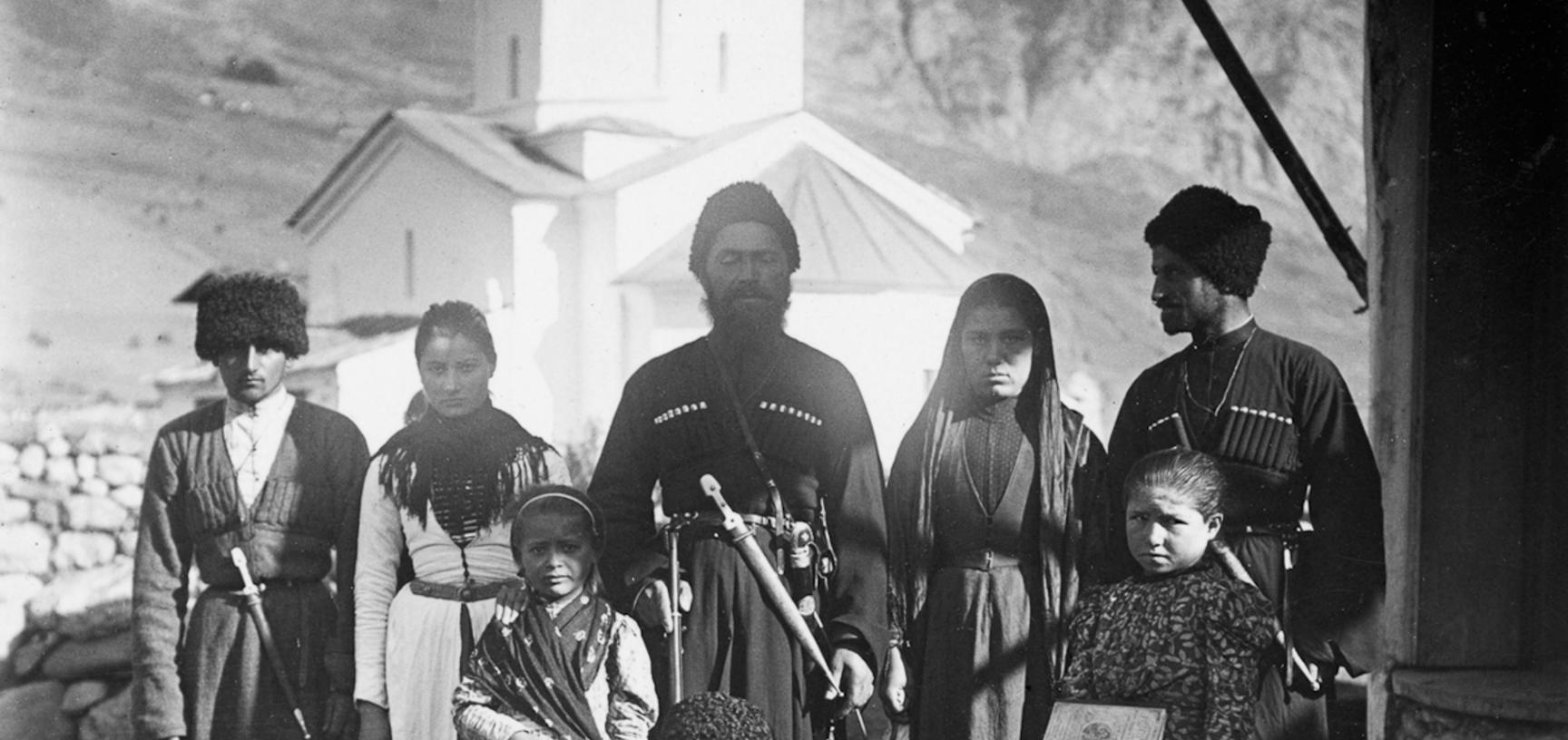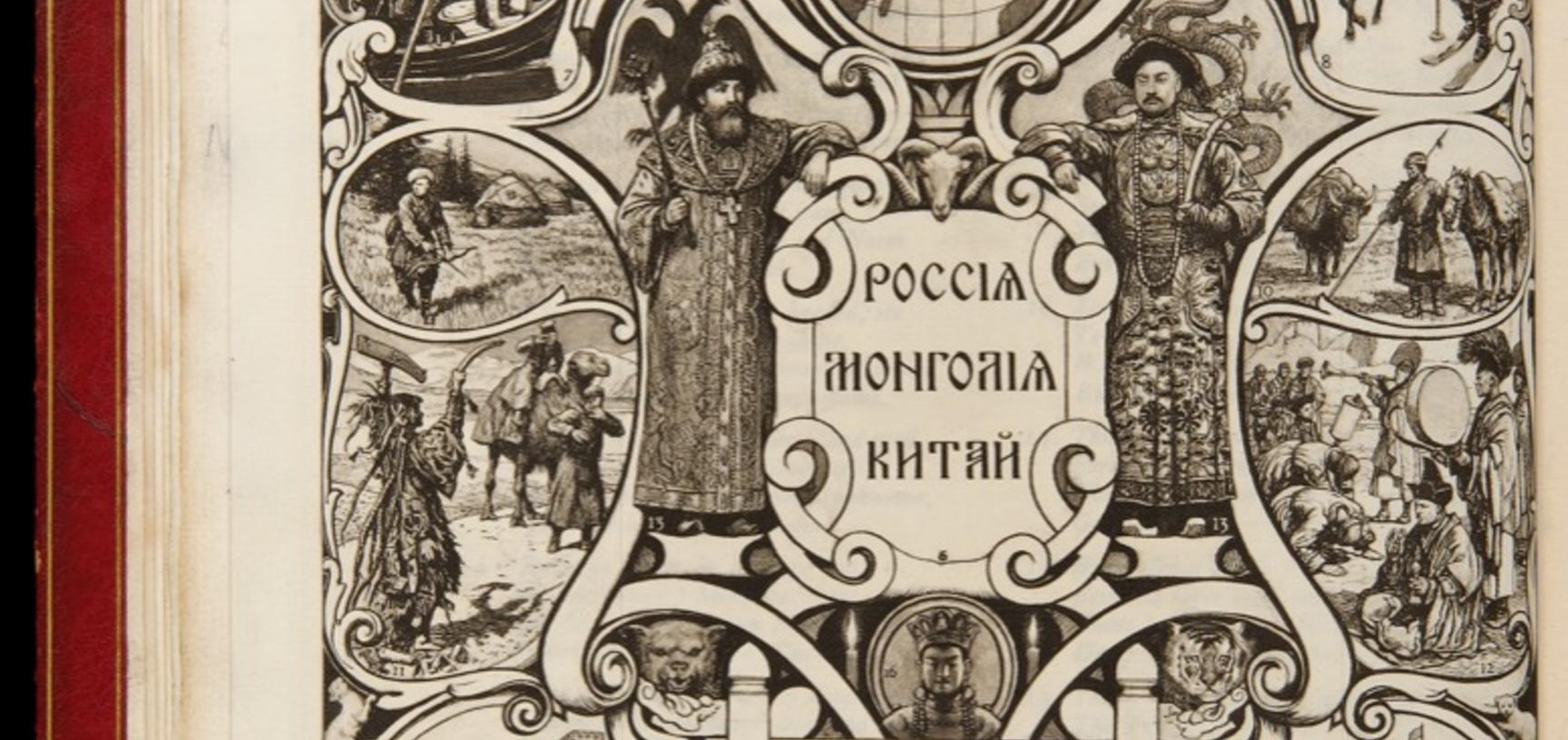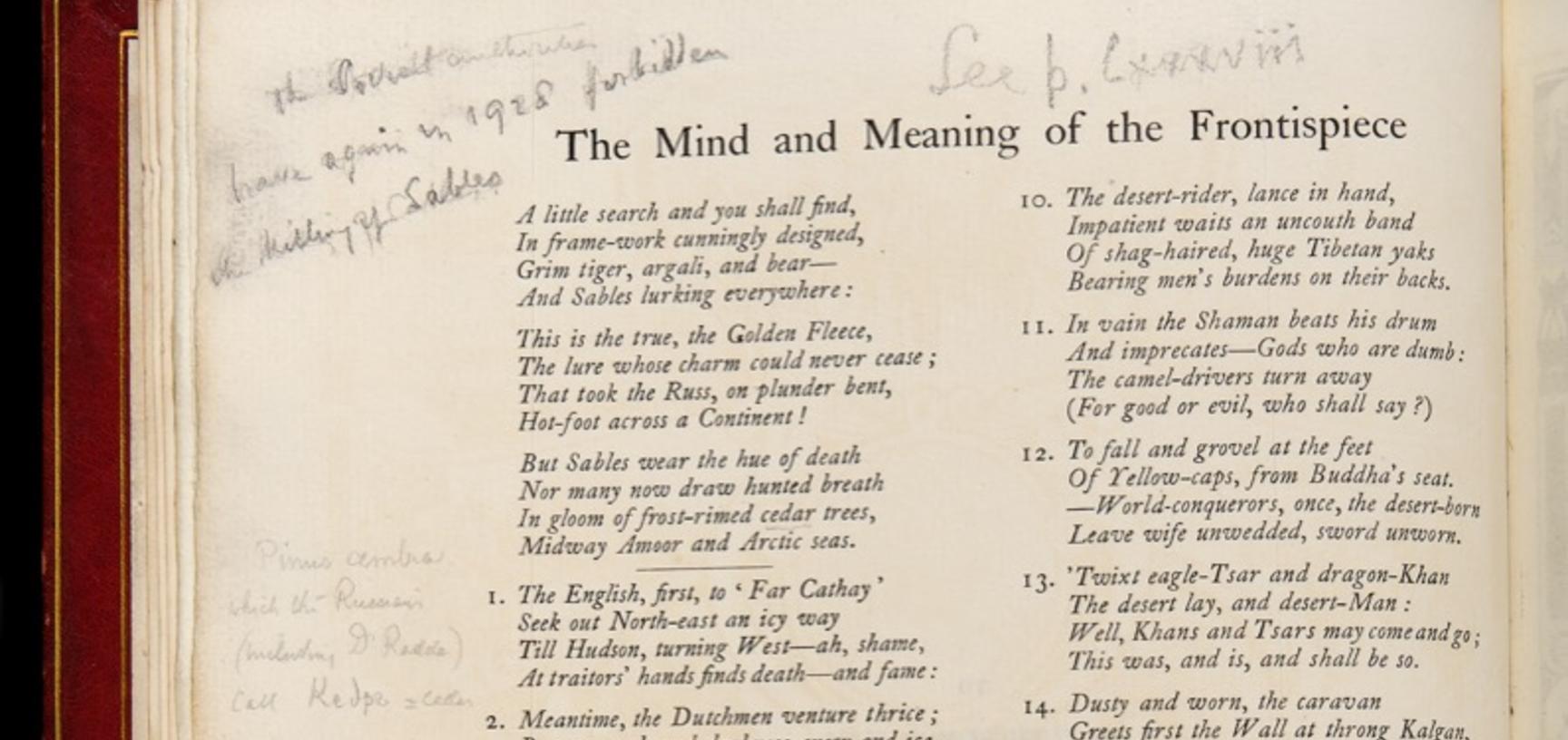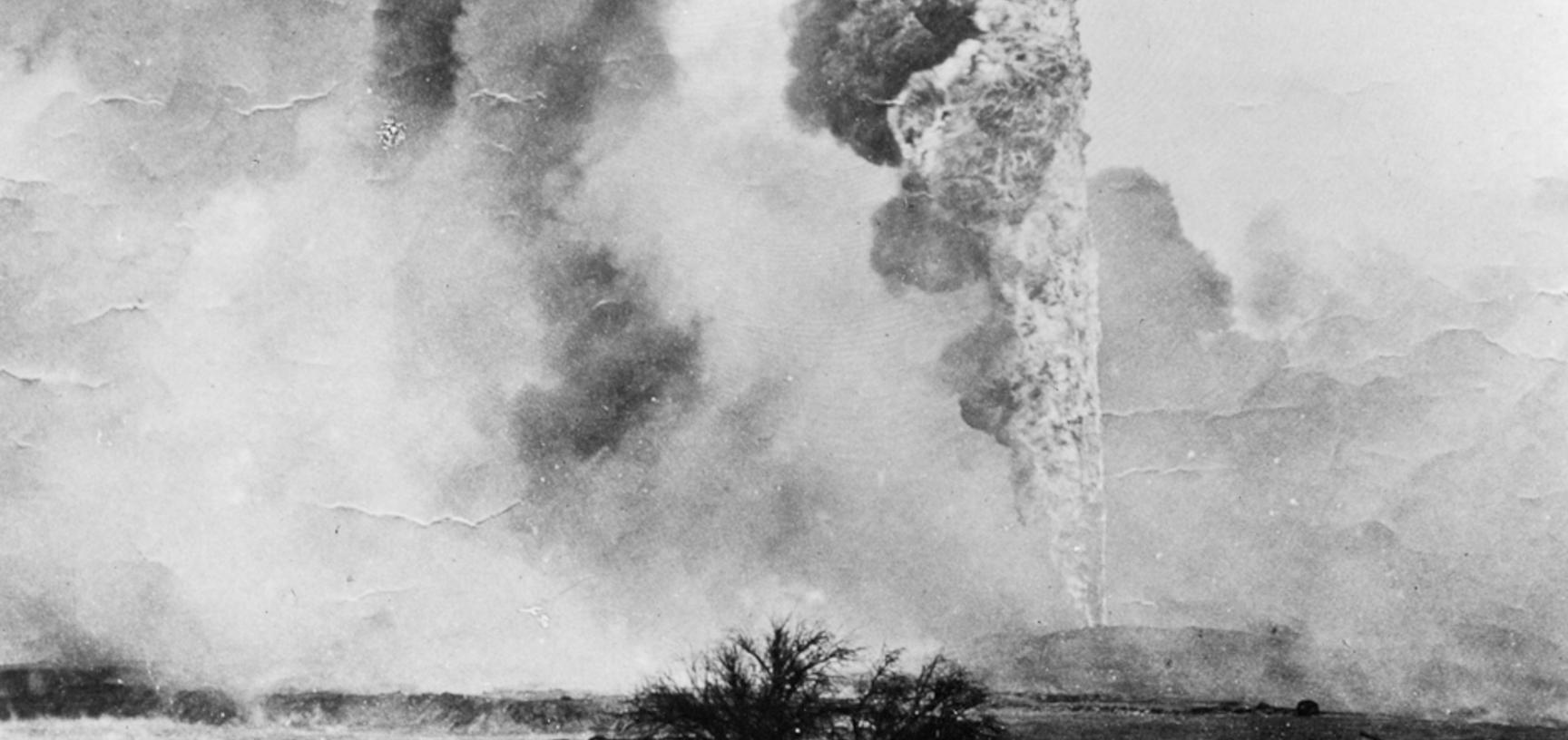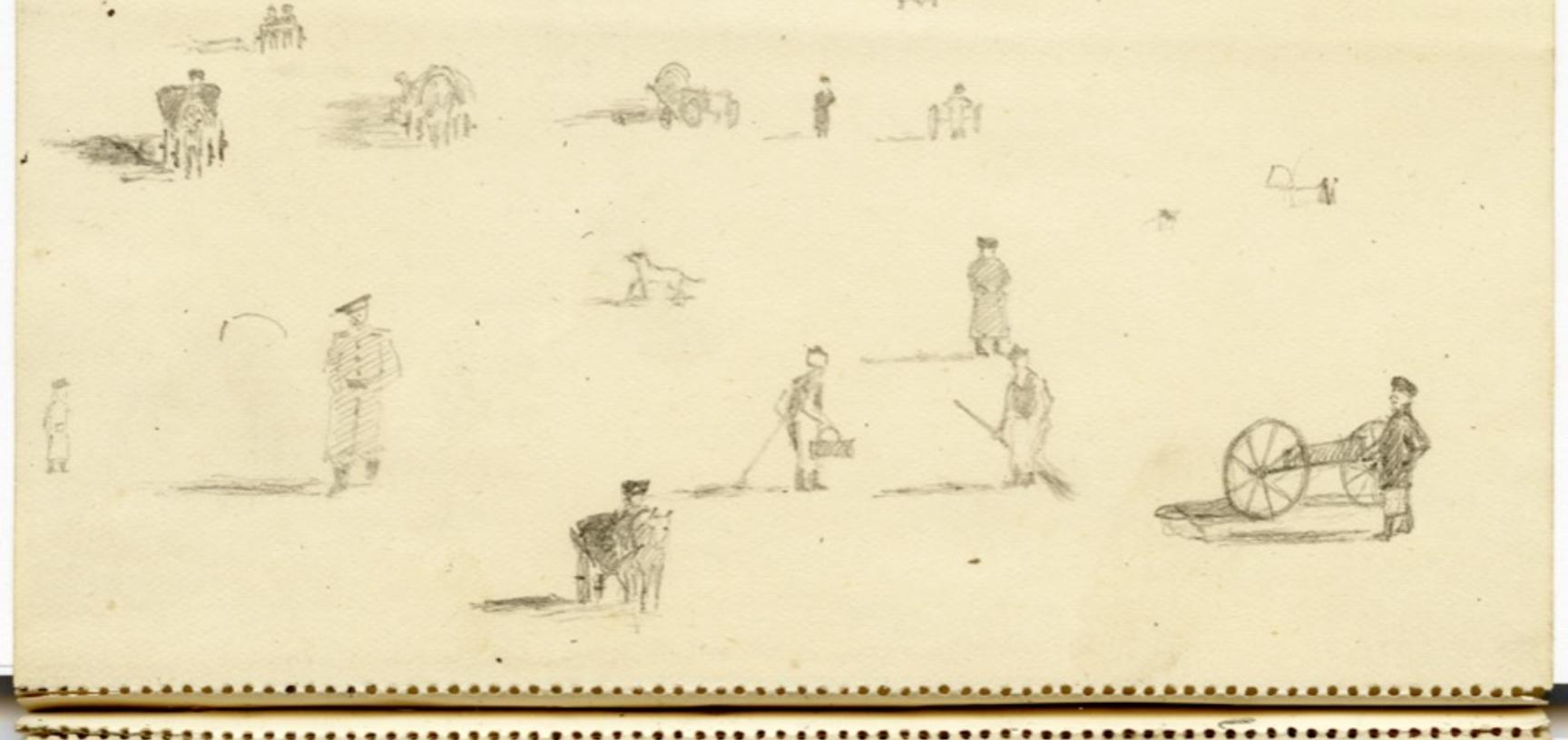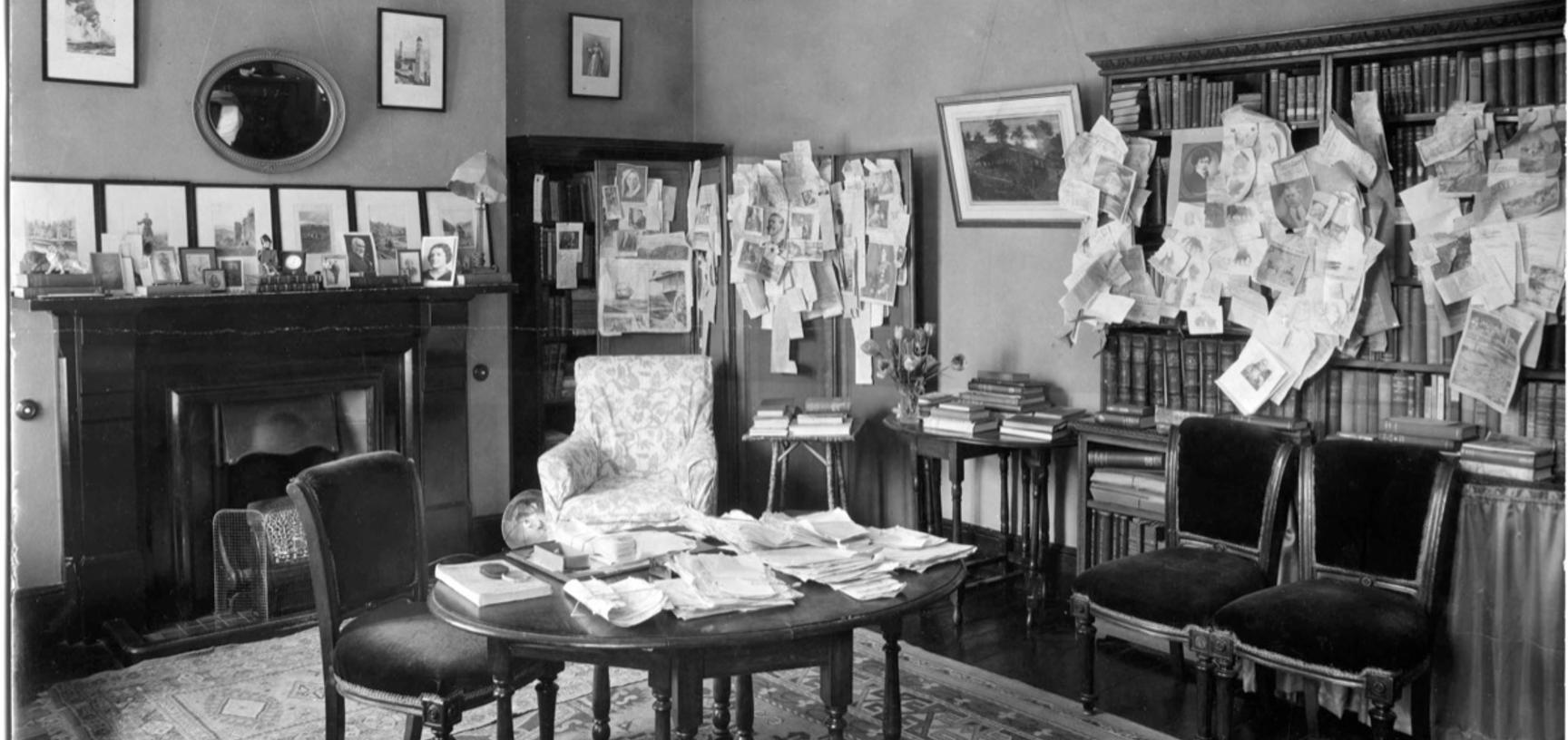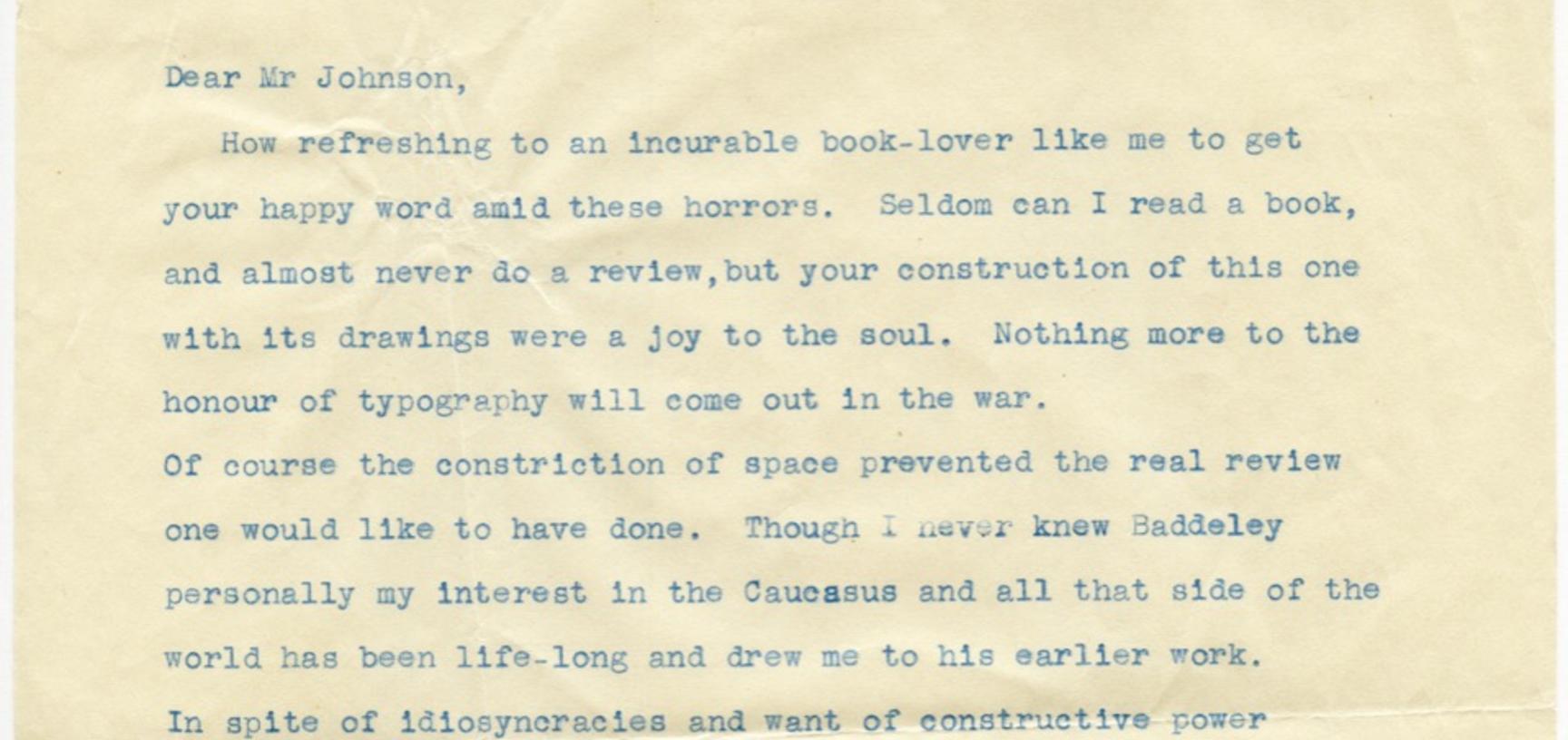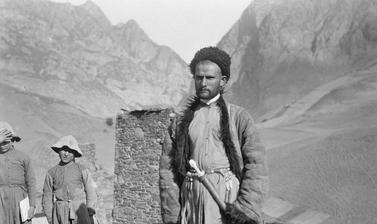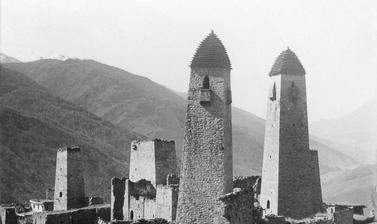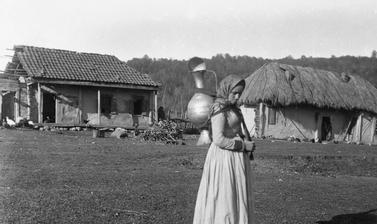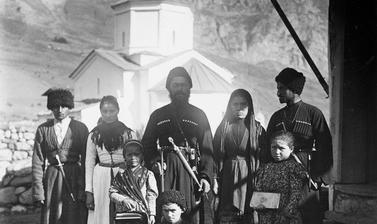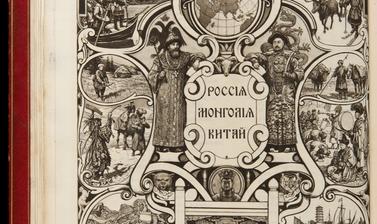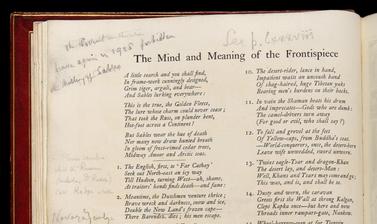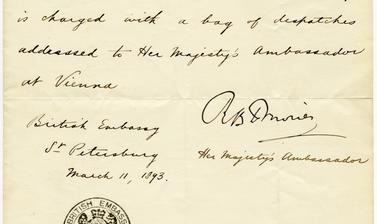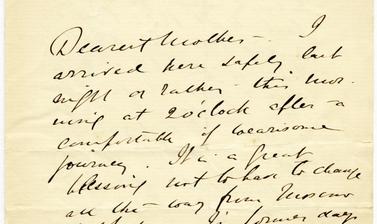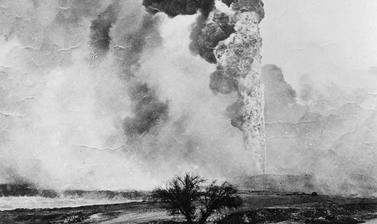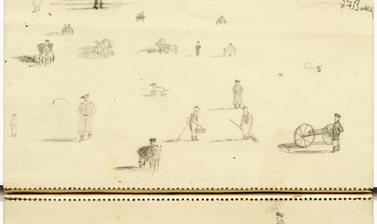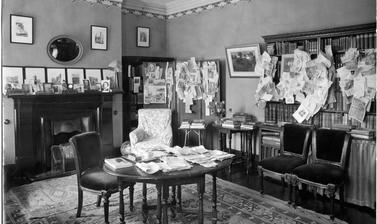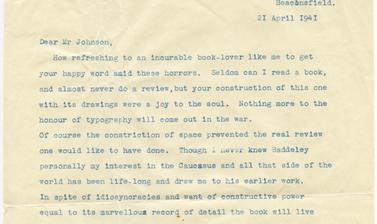Across the Caucasus: Photographs and Manuscripts from the John F. Baddeley Collection
This case display presents a selection of photographs, manuscripts and exquisite published material by the writer and traveller John F. Baddeley (1854–1940). Born and raised in England, John Baddeley was introduced to Russia and its cultures by Count Peter Schouvaloff, the Russian Ambassador in London, a family friend with whom he first visited Russia in 1879, and through whose auspices he subsequently secured the position of special correspondent to the (London) Standard newspaper in St Petersburg, a post which he held for ten years. ‘Baddeley never led his editors astray’, Sir Charles Hagberg Wright later recalled, ‘and his knowledge of the languages and his access to sources of information in the highest Russian circles which were available to no other Englishman in Russia materially helped to enhance the reputation of his paper and were not infrequently of great use to the Embassy in St. Petersburg.’ It was during a routine assignment for the Standard, when he was reporting on an offical visit of Tsar Alexander III to the Caucasus in 1888, that Baddeley first made acquaintance with the Caucasus (between the Black Sea and the Caspian Sea), starting an interest in the region and its peoples which in time led to the production of his first important historical work, The Russian Conquest of the Caucasus (1908).
‘During the years that he was Correspondent to the Standard, and later when he embarked on a quasi-commercial career in Siberia, on the Amur River, and in the Caucasus, his leisure moments were fully occupied in historical, antiquarian, and anthropological research’, records a memoir published on Baddeley’s death in 1940. ‘In the unexplored regions of Manchuria and of Asiatic and Southern Russia, where in the course of business he travelled widely, Baddeley became familiar with the manners and customs of the people of the various races around him as well as with the ethnology and archaeology of these regions. These journeys enabled him to gather together a mass of information from hitherto entirely unexplored sources.’ It was during his travels in the Russian Far East that Baddeley amassed much of the information for his monumental Russia, Mongolia, China (1919), displayed here with its original artwork, for which he was awarded the Victoria Medal of the Royal Geographical Society. Based on original documents located in various Russian achives and acknowledged immediately for its presentation of information unavailable elsewhere, Baddeley’s obituary in The Times later noted ‘“Russia, Mongolia, and China” will remain a mine of information on that period.’
Following his retirement, initially in London and later in Oxford, Baddeley developed an interest in painting flowers and during his last decade wrote an account of his earlier travels in the Caucasus, a period of reminiscence which the Georgian scholar Sir Oliver Wardrop described as being ‘as happy as any previous period of his life’. Published as The Rugged Flanks of the Caucasus (1940), the two-volume book was again beautifully produced, with reproductions of Baddeley’s drawings made after the photographs which he had taken several decades earlier, some of which are displayed here. Appearing posthumously, the work stands testament to the passion for the Caucasus region of an experienced traveller and thorough scholar and remains of interest today for its careful record and acute observation of ethnographic detail. John Baddeley’s photograph album and personal papers, together with the author’s own copy of Russia, Mongolia, China, were donated to the Pitt Rivers Museum in 2001 by Lady Cicely Nepean.
Acknowledgements and Credits
- Exhibition curated by Philip Grover and Christopher Morton
- Case design and installation by Jon Eccles


